Use this nursing care plan and management guide to provide care for patients under prolonged bed rest. Enhance your understanding of nursing assessment, interventions, goals, and nursing diagnosis, all specifically tailored to address the unique needs of individuals under prolonged bed rest.
What is bed rest?
Bed rest is therapeutically used as a means to decrease the metabolic demand on the body and promote recovery during an illness. However, prolonged bed rest may have deleterious effects on the cardiovascular, respiratory, musculoskeletal, integumentary, and cognitive systems of the patient which may lead to the onset of diseases resulting in irreversible damage. With patients being released earlier from the hospital, most of the healthcare problems are being managed in assisted living facilities (nursing homes) or at home.
Nursing care plan goals for patients on prolonged bed rest include maintaining peripheral and cerebral tissue perfusion, maximizing the patient’s functional ability, maintaining bowel function, promoting sexual functioning, preventing disuse syndrome, achieving a maximum level of self-care, and managing potential health complications.
Nursing Care Plans and Management
The nursing care plan for patients on prolonged bed rest focuses on maintaining patient comfort, preventing complications such as deep vein thrombosis, muscle wasting, and urinary tract infections, and promoting physical and psychological well-being.
Nursing Problem Priorities
The following are the nursing priorities for patients on prolonged bed rest:
- Assess and prevent complications of prolonged bed rest.
- Assist with repositioning and mobility exercises.
- Monitor vital signs and respiratory function.
- Provide education and emotional support.
- Coordinate with healthcare providers.
- Schedule regular assessments and interventions.
- Support gradual reintegration into activity.
Nursing Assessment
Assess for the following subjective and objective data:
- Fatigue and weakness
- Pain or discomfort in the muscles or joints
- Difficulty sleeping or changes in sleep patterns
- Feelings of boredom, frustration, or restlessness
- Decreased muscle strength and tone
- Loss of muscle mass or atrophy
- Limited range of motion in joints
- Presence of pressure ulcers or skin breakdown
- Changes in vital signs, such as increased heart rate or decreased blood pressure
- Edema or swelling in the extremities
Nursing Diagnosis
After thorough assessment, nursing diagnoses are formulated to address the challenges of prolonged bed rest, guided by the nurse’s clinical judgment and understanding of the patient’s unique condition. While nursing diagnoses help organize care, their use may vary across clinical settings. Ultimately, the nurse’s expertise and judgment shape the care plan to prioritize each patient’s needs. Here are examples of nursing diagnoses that may be useful for common concerns associated with prolonged bed rest:
- Risk for Impaired Skin Integrity as evidenced by immobility, pressure over bony prominences, and decreased movement during bed rest.
- Impaired Physical Mobility related to prolonged bed rest as evidenced by muscle weakness, limited range of motion, and decreased muscle mass.
- Impaired Gas Exchange related to decreased lung expansion as evidenced by shallow breathing, diminished breath sounds, and fatigue.
- Risk for Constipation due to reduced physical activity and inadequate fluid intake.
- Activity Intolerance related to immobility and muscle atrophy as evidenced by weakness, shortness of breath upon exertion, and increased heart rate with activity.
- Risk for Disuse Syndrome as evidenced by prolonged inactivity and bed rest, increasing susceptibility to muscle atrophy, joint contractures, and decreased strength.
- Risk for Powerlessness as evidenced by dependency on others for care needs and loss of autonomy during extended bed rest.
Nursing Goals
Goals and expected outcomes may include:
- The patient will have adequate peripheral perfusion as evidenced by normal skin color and temperature and adequate distal pulses (greater than 2+ on a 0-4+ scale) in peripheral extremities.
- The patient will perform exercises independently, comply with the prophylactic therapy, and maintain an intake of 2-3 liters per day of fluid unless contraindicated.
- The patient will relate satisfaction with sexuality and understanding of the ability to resume sexual activity.
- The patient will verbalize knowledge of strategies that promote bowel elimination.
- The patient will state the return of normal pattern and character of bowel elimination within 3-5 days of this diagnosis.
- The patient and caregivers will develop realistic goals for independence and participation in self-care.
- The patient will engage in diversional activities and relates the absence of boredom.
- When getting out of bed, the patient will have adequate cerebral perfusion as evidenced by a heart rate of fewer than 120 beats per minute and blood pressure of 90/60 mm Hg or greater (or within 20 mm Hg of the patient’s normal range) immediately after a position change, normal skin color, dry skin, and absence of vertigo and syncope, with a return of heart rate and blood pressure to resting levels within 3 minutes of the position change.
- When bed rest is no longer advised, the patient will exhibit complete ROM of all joints with the absence of pain, and limb girth measurements are congruent with or increased over baseline measurements.
- The patient will exhibit cardiac tolerance to activity or exercise as evidenced by the respiratory rate of 20 breaths/min or less with normal depth and pattern; absence of rales, heart rate of 20 bpm or less over resting heart rate; systolic blood pressure 20 mm Hg or less over or under resting systolic blood pressure; normal sinus rhythm; no evidence of new murmurs, new dysrhythmias, gallop, or chest pain; and warm and dry skin.
- The patient will rate perceived exertion (RPE) at 3 or less on a scale of 0 (none) to 10 (maximum).
- The patient will maintain muscle strength and joint range of motion (ROM).
Nursing Interventions and Actions
Therapeutic interventions and nursing actions for patients on prolonged bed rest may include:
1. Promoting Adequate Circulation
Patients on prolonged bed rest are at risk of developing various circulatory complications. Immobility can lead to reduced blood flow, increased risk of blood clots, and decreased muscle tone in the legs, potentially causing deep vein thrombosis (DVT) or orthostatic hypotension. Regular monitoring and appropriate interventions, such as physical therapy, leg exercises, and compression stockings, are needed in managing and improving the circulation status of these patients.
Assess the calf or groin for any redness, pain, warmth in the affected area, unilateral swelling of a leg, coolness, abnormal color, and external venous dilation distal to the affected area.
Pain in the calf elicited upon dorsiflexion of the foot (positive Homan’s sign) along with these clinical signs may be indicative of deep vein thrombosis (DVT) or venous thromboembolism.
Monitor vital signs and review the erythrocyte sedimentation rate (ESR) results once available.
Other signs of deep vein thrombosis may include tachycardia, fever, and increased ESR. The normal ESR range is 0-15 mm/hr for a male under 50 years old, 0-20 mm/hr for a male older than 50 years old; in females under 50 years old is 0-20 mm/hr, and older than 50 years is 30 ml/hr.
Measure and compare the circumference of the affected leg and the non-affected leg.
If the circumference of the affected leg is larger than the opposite leg, this is a sign of deep vein thrombosis (DVT) or venous thromboembolism.
Review laboratory values such as prothrombin time (PT) international normalized ratio (INR), and partial thromboplastin time (PTT).
If the patient is on anticoagulant therapy, reference values for PTT are 60-70 sec or 1.5-2.5 x control value and INR value of 2.0-3.0. Values higher than these imply an increased risk of bleeding.
Notify the physician of any significant findings of the patient.
Once the patient showed signs of deep vein thrombosis (DVT), additional assessment and tests will be needed to prevent the occurrence of a pulmonary embolus that could compromise the leg.
Inform and educate the patient about the signs and symptoms of deep vein thrombosis (DVT).
A patient who can recognize these symptoms is more likely to report to the health care provider immediately for timely intervention.
Instruct patient on ankle dorsiflexion-plantar flexion (calf-pumping) and ankle-circling exercises.
Helps promote blood flow. Each movement of the patient should be repeated ten times, each exercise every hour during prolonged periods of immobility, as long as the patient does not have any symptoms of deep vein thrombosis (DVT) or venous thromboembolism.
Advise the patient to avoid crossing the feet at the ankles or knees while in bed.
These actions may cause the pooling of blood in the veins.
Advise deep breathing exercises.
Diaphragmatic breathing increases negative pressure around the lungs and thorax to facilitate the emptying of large veins and hence improve peripheral tissue perfusion.
Elevate the foot part of the bed by 10 degrees if the patient is at risk for DVT.
Elevating the foot of the bed promotes venous return.
Instruct the patient to wear an anti-embolism hose, pneumatic sequential compression stockings, pneumatic foot pump devices, or thromboembolism-deterrent (TED) hose unless contraindicated by peripheral vascular disease (PVD).
These devices reduce the risk of venous stasis. The pneumatic devices, which give increased compression than an anti-embolism hose, are particularly useful in preventing deep vein thrombosis in patients who are immobile. Rest pain that is precipitated by the use of a TED hose, foot pump devices, and pneumatic sequential compression stockings may be experienced by clients with peripheral vascular disease.
Remove pneumatic sequential compress stockings for 10-20 minutes every 8 hours. Reapply the hose after elevating the patient’s legs at least 10 degrees for 10 minutes.
Removing pneumatic sequential compress stockings enables inspection of underlying skin for evidence of irritation or breakdown. Elevating the legs before reapplying the pneumatic sequential compress stockings promotes venous return and decreases edema, which otherwise would remain and cause discomfort when the hose is reapplied.
In nonrestricted patients, increase fluid intake to at least 2-3 liters per day. Educate the patient about the need to drink large amounts of fluid (9-14 8-oz glasses) daily. Monitor intake and output to ensure compliance.
Increased hydration reduces hemoconcentration, which can contribute to the development of DVT/VTE.
Administer anticlotting medication as prescribed.
See Pharmacologic Management
Instruct the patient to self-monitor and observe any evidence of bleeding.
Anticoagulant drugs increase the risk of bleeding. It is important for the patient to know the signs of bleeding so that they can report them as soon as they are noted to ensure timely intervention. Possible types of bleeding include epistaxis, bleeding gums, hematuria, hematochezia, hematemesis, hemoptysis, ecchymoses, menometrorrhagia, and melena.
Educate the patient about avoiding food, and herbal that can interact with anticoagulant therapy.
Certain foods and over-the-counter herbals can increase bleeding such as Coenzyme Q-10, devil claw, echinacea, fenugreek, garlic, ginger, Ginko Biloba, goldenseal, green tea, passion flower, quinine, red clover, saw palmetto, St. John’s wort, and Valerian.
Educate the patient on medications and foods that decrease the effect of anticoagulants.
Examples of medications and foods are azathioprine, antithyroid medications, carbamazepine, dicloxacillin, glutethimide, griseofulvin, haloperidol, nafcillin, oral contraceptives, phenobarbital, rifampin, vitamin C, dark green leafy vegetables, spinach, kale, lettuce, broccoli, asparagus, cauliflower, and Brussels sprouts.
2. Managing Sexuality Concerns
Patients on prolonged bed rest may experience changes in their sexual patterns. Physical limitations, decreased mobility, and the overall impact of their medical condition can affect their sexual desire, function, and intimacy. Open communication with healthcare providers and support from partners or counselors can help address these changes and explore alternative methods of sexual expression and intimacy.
Determine the patient’s problem, and validate it with the patient.
Identifies the cause of sexual dysfunction. These can be due to a present disease condition, lack of privacy, or perceived limitations. Signs of sexual dysfunction can include making inappropriate sexual gestures, inappropriate touching, regression, self-enforced isolation, and similar behaviors.
Assess the normal sexual function of the patient which includes the weight of sex in the relationship, frequency of interaction, common positions used, and the couple’s ability to adjust to fulfill requirements of the patient’s limitation.
Helps determine the patient’s normal sexual function and adjustments that will be needed under current circumstances.
Allow the patient and significant others to express feelings and concerns regarding lack of sex, having sexual relationships in the health care setting, hurting the patient, or having to use new or alternative means for sexual satisfaction.
Establishing open communication helps build a strong intimate relationship.
Allow acceptable expressions of sexuality by the patient.
Examples of positive and acceptable behaviors may eliminate inappropriate behaviors. Examples for a woman could include wearing jewelry and makeup and for a man, shaving and wearing his own shirts and shorts.
Encourage collaboration with the patient and significant others developing strategies.
This information will facilitate an understanding of methods to attain sexual satisfaction.
Encourage the patient and significant other to try alternative ways of sexual expression when necessary.
Alternative ways of sexual expression may include mutual masturbation, changed positions, sex toys, and exploring other sensual areas for each partner.
Tell the patient and significant other that it is possible to have private time for intimacy. Make sure to place a “Do not disturb” sign on the door to restrict staff and guests from the room, or arrange for temporary private quarters.
These measures promote intimacy by ensuring private time between the patient and the significant other.
Evaluate the need for professional sexual counseling when needed.
Counseling may enhance communication and agreement of alternative means.
3. Restoring Bowel Function and Managing Constipation
Constipation is a common issue faced by patients on prolonged bed rest. Reduced physical activity, limited access to adequate fluids and dietary fiber, as well as certain medications, can contribute to bowel irregularities. Implementing strategies such as maintaining hydration, incorporating fiber-rich foods, using stool softeners, and encouraging regular toileting can help prevent and manage constipation in these patients.
Assess the bowel history of the patient.
Helps determine normal bowel habits and measures that are effectively used at home.
Monitor and record the patient’s bowel movements, current diet, and intake and output.
This information tracks bowel movements and factors that promote or prevent constipation. Signs and symptoms of constipation include the following: passing fewer stools than usual, abdominal pain or bloating, straining during the passage of stool, and complaints of rectal fullness. Fecal impaction may be described as continuous leaking of the liquid stool upon digital rectal exam.
Offer a bedpan; provide privacy; and time medications, enemas, or suppositories in a way that it will take effect at the time of day when the patient normally has a bowel movement.|
These actions maintain the patient’s normal bowel habits.
Use a gloved, lubricated finger to remove stool from the rectum if the patient is suspected to have a rectal impaction.
Digital stimulation helps trigger a bowel movement. Oil retention enema may be given to soften impacted stool
Offer warm fluids early in the morning and encourage toileting.
These actions can trigger the gastrocolic and duodenocolic reflexes of the patient.
Instruct the patient to increase the intake of fiber in the diet and fluid intake of at least 2-3 liters per day unless contraindicated.
These interventions stimulate peristalsis. Examples of insoluble fiber foods include whole wheat or bran products, cereals, nuts, green beans, cauliflowers, and lentils.
Make use of the patient’s activity level within limitations of pain, endurance, and treatment.
Physical activity stimulates peristalsis, which helps maintain normal bowel movements.
Educate nonpharmacologic means of pain management.
Nonpharmacologic strategies that may reduce the need for opioid use include ice, massage therapy, guided imagery, music therapy, biofeedback, transcutaneous electrical nerve stimulation (TENS), and spinal cord stimulation (SCS).
Anticipate the need for pharmacologic therapy from the physician if needed.
Beginning with the most gentle therapy helps relieve rebound constipation and ensures the least disruption of the patient’s normal bowel habits. The following is a recommended hierarchy of therapy:
Explain the role that opioid agents and other medications play in causing constipation.
Medications that are known to cause constipation include opioids, antidepressants, anticonvulsants, iron supplements, diuretics, and calcium channel blockers. Methylnaltrexone, a μ-opioid receptor antagonist, is a drug that provides relief from opioid-induced constipation.
4. Providing Diversional Activities
Engaging in meaningful and enjoyable diversional activities is essential for patients on prolonged bed rest to maintain their mental and emotional well-being. Such activities can include reading, listening to music, watching movies, playing games, doing puzzles, or engaging in creative pursuits like drawing or writing. These activities help alleviate boredom, promote relaxation, and provide a sense of purpose and fulfillment during their limited mobility.
Assess the activity tolerance of the patient.
Activity tolerance will determine the number of activities patients can participate in within the limits of their illness.
Assess for evidence of the patient having an interest in something to read or do, daytime napping, and expressed inability to do leisure activities due to hospitalization.
These are indicators of boredom.
Collect a database by evaluating the patient’s usual support systems and relationship patterns with significant others. Ask the patient and significant other about the patient’s interests.
This allows the nurse to explore diversional activities that may be appropriate for the health care setting and the patient’s level of activity tolerance.
Allow discussion of previous activities or reminiscence.
This could serve as an option for performing desired activities during recovery.
Encourage significant others to visit within the limits of the patient’s endurance and to involve the patient in activities that are of interest to him or her.
Visiting and partaking in activities with significant others likely decrease boredom.
Initiate activities that demand little concentration and progress to more complex tasks as the patient’s condition permits.
Initially, the patient may find challenging tasks frustrating. Physiologic problems such as anemia and pain may make concentration difficult.
Provide low-level activities to the patient’s tolerance.
These activities promote mental stimulation and reduce boredom. Examples include access to WiFi, iPods, iPads, iPhones, laptop computers, Kindles, and Get Well Network. Offering books or magazines related to the patient’s recreational or other interests, computer games, television, and providing writing implements for brief intervals of activity are other alternative actions.
Personalize the patient’s environment with favorite items and images of significant others.
Promotes visual stimulation.
Increase the patient’s participation in self-care.
Doing in-bed exercises, keeping track of intake and output, and related activities can and should be performed routinely by patients to provide a sense of control, purpose, and fulfillment, which likely will lessen the boredom.
As the patient’s endurance improves, encourage the use of appropriate diversional activities such as puzzles, model kits, handicrafts, and computerized games and activities; Recommend that the patient’s significant other recreational devices, crafts, and personal grooming from home.
Watching television, using the computer, listening to the radio or books on tape, and playing cards or board games usually are good diversions.
As the condition of the patient improves, Allow the patient to view outside activities by assisting him or her in a chair near a window, provide the patient an opportunity to sit in a solarium so that he or she can visit other patients, and if feasible, bring the patient outside for a short period.
Being outdoors, speaking, and meeting with other people can reduce boredom.
Evaluate the need for occupational therapy, psychiatric counseling, social services, and spiritual services for consultation.
Such referrals may cover other diversional activities.
5. Preventing Injury Risk
Lack of activity, disuse syndrome, and inadequate blood flow to the brain are critical factors that must be addressed to prevent injury and optimize the well-being of patients on prolonged bed rest. Prolonged immobility can lead to a decline in muscle strength, joint flexibility, and cardiovascular fitness, resulting in disuse syndrome characterized by muscle wasting, bone demineralization, and decreased overall physical function. While inadequate blood flow to the brain can impair cognitive function, decrease alertness, and increase the risk of ischemic events.
Assess for recent diuresis, diaphoresis, or change in vasodilator therapy.
These are factors that raise the risk of orthostatic hypotension due to changes in fluid volume.
Watch out for diabetic cardiac neuropathy, denervation following heart transplantation, advanced age, or severe left ventricular dysfunction.
These are factors that increase the risk of orthostatic hypotension due to altered autonomic control.
Monitor blood pressure and advice the patient to immediately report symptoms of lightheadedness or dizziness.
Hypotension, lightheadedness, and dizziness are signs of orthostatic hypotension and would require a return to the supine position.
Assess for a decline in systolic blood pressure of 20 mm Hg or higher and an increased pulse rate, together with symptoms of vertigo and impending syncope.
These are signs of orthostatic hypotension that indicate the necessity for a return to the supine position.
Discuss the cause of orthostatic hypotension and interventions for preventing it.
Patients who are knowledgeable of the cause and interventions for preventing orthostatic hypotension are more likely to avoid it.
Instruct the patient to perform leg exercises shortly prior to mobilization.
Leg exercises promote venous return, which helps avoid orthostatic hypotension.
Encourage position changes within the patient when the patient is preparing to move out of bed.
Changes in position help adjust the patient to the upright position. These changes may be achieved with the use of assistive devices such as an over-bed trapeze, hydraulic lift, and EZ Lift.
Apply an anti-embolism hose once the patient is mobilized.
The use of ananti-embolism hose and sequential compression hose prevents deep vein thrombosis and orthostatic hypotension.
Follow these guidelines for mobilization:
Instruct the patient to dangle legs and perform leg exercises at the bedside. Note for signs of orthostatic hypotension, including lightheadedness or dizziness, diaphoresis, fatigue, tachycardia, hypotension, and syncope.
This intervention provides for a progressive adjustment to the possible effects of venous pooling and associated hypotension in individuals who have been lying down for a period of time.
If dangling of the leg is tolerated, allow the patient to stand at the bedside with two staff members in guidance, then if an adverse effect is not observed, gradually progress the patient to ambulation.
This action guarantees the safety of the patient in the case of a fall.
Assess the range of motion (ROM) of the joints, especially to the following areas that are particularly prone to joint contracture:
- Shoulders. A frozen shoulder prohibits extension and abduction.
- Wrists. A wrist drop limits extension.
- Fingers. Fingers can develop flexion contractures that prohibit extension.
- Hips. Hips can develop flexion contractures that alter the gait by shortening the limb or develop external rotation or adduction malformations that affect the gait.
- Knees. Knees may have flexion contractures that can develop to limit extension and affect the gait.
- Feet. Feet can “drop” due to prolonged plantar flexion, which prohibits dorsiflexion and affects the gait.
Evaluate for footdrop by observing the feet for plantar flexion and assessing the patient’s ability to point the toes upward at the body. Record the assessment daily.
Since feet lie normally in plantar flexion, foot drop may happen when plantar flexion is prolonged. The inability to dorsiflex is a manifestation of foot drop, and it needs immediate action to avoid irreversible damage. This may require the use of footboards or high-top tennis shoes to facilitate normal dorsiflexion position.
Perform and record limb girth measurements, dynamography, and ROM, and develop exercise baseline restrictions.
This evaluation of present muscle mass, strength, and joint motion allows succeeding assessment and encourages exercise and range of motion appropriate for the patient.
Place the patient in a position that achieves proper standing. Maintain this position using assistive aids such as pillows, towels, foam heal positioners, footboards, PlexiPulse compression device, and high-top tennis shoes.
A position in which the head is neutral or slightly flexed on the neck, hips are extended, knees are extended or minimally flexed, and feet are at right angles to the legs achieves proper standing alignment, which helps facilitate ambulation when the patient is able to do so.
When the head of the bed (HOB) must be elevated 30 degrees, extend the patient’s shoulders and arms.
This position keeps proper spinal posture.
Encourage position changes at least every 2 hours. Establish a turning schedule and post it at the bedside.
Position changes maintain correct body alignment, limit contractures, decrease pressure on bony prominences, reduce venous stasis, and facilitate maximal chest expansions.
Make sure that the patient is prone or side-lying, with hips extended, for a similar amount of time spent in the supine position or, at a minimum, 3 times a day for 1 hour.
These positions avoid hip flexion contractures.
Allow the fingertips of the patient to extend over the edge of the pillow.
This position keeps the normal arching of the hands.
Put thin pads below the angles of the axillae and lateral areas of the clavicles.
These pads help avoid shoulder internal rotation and keep the anatomic position of the shoulder girdle.
Allow the patient to extend his or her hips.
This position helps avoids hip flexion contractures.
When the patient is allowed to be placed in a prone position, move him or her to the end of the bed and let the feet rest between the mattress and footboard.
This avoids not only plantar flexion and hip rotation but also heel and toe injury.
When the patient is placed in a side-lying position, extend the lower leg from the hip.
This position helps avoid hip flexion contractures.
Educate the patient and significant other on the steps and rationale for a range of motion exercises, and allow return demonstrations. Provide passive exercises for patients unable to perform active or active assisted exercises. Integrate movement patterns into care routines.
These measures promote compliance with the exercise regimen and help avoid the formation of contractures.
Provide the patient with a written copy of the exercise program. Advise the patient to follow the given exercises as required.
These measures promote learning and compliance with the exercise program.
Discuss with the patient the reason why muscle atrophy happens. Stress the importance of exercise in maintaining periarticular tissue elasticity and muscle strength. If there is a presence of pathologic conditions, inquire with the physician about exercises appropriate for the patient.
Muscle atrophy occurs because of unused or inability to use the joint, often caused by pain. This information encourages patients to perform exercises in as much as disuse eventually may result in decreased muscle mass and poor blood supply and a loss of periarticular tissue elasticity, which in turn can lead to increased muscle fatigue and joint pain with use.
Discuss the need to be involved in self-care as tolerated.
Self-care helps maintain muscle strength and promotes a sense of participation and control.
Determine the patient’s baseline level of performance on a given set of exercises, and then set realistic goals for repetitions.
These goals help determine the effectiveness of the exercise plan and the progress made.
Assist with resistive exercises for noncardiac patients requiring help with muscle strength; For patients in beds with Balkan frames or other types of over-bed frames that utilize weights, pulleys, and slings.
Resistance builds the force required to do the exercise and facilitates the maintenance of muscle strength.
Provide a visual diagram of the progress of the patient in the exercise therapy.
Such progress and providing positive reinforcement encourage continued compliance with the regimen.
Instruct the use of isometric exercises to those patients needing some joint rest.
In isometric exercises, the patient contracts a muscle and holds the position for a least 5 seconds. for a count of 5 or 10. The sequence is done again for increasing counts until enough level of endurance has been reached.
Post the exercise regimen at the bedside and allow the involvement of the patient’s significant others.
These efforts ensure consistency by all healthcare personnel and the participation and support of significant others.
Use positioning devices such as pillows, rolls, blankets, knee abductors, drop seats, foot supports, back wedges, back support splints, and wedges cushions.
Enables the patient to remain functional as the activity increases.
When using adjunctive devices, regularly assess the skin for any alterations.
Monitoring changes in skin integrity allow immediate measures that prevent skin breakdown.
Educate the patient and significant others with transfer or crutch-walking techniques and the use of a cane, walker, or wheelchair. Stress the value of proper body mechanics.
These measures help ensure that patients can safely maintain the highest possible level of mobility while also improving circulation.
Encourage the use of assistive devices such as transfer boards, gait belts, and leg lifters.
These aids facilitate movement and promote safety.
Provide a time of uninterrupted rest between exercises.
Rest allows patients to refuel energy stores.
Evaluate the need for referral to physical therapy or occupational therapy as appropriate.
Collaboration with other specialists will enable the patient to have the best ROM as possible.
Assess the patient’s tolerance to the exercise regimen and note any physiologic changes.
Transient pulmonary congestion secondary to ischemia, diminished lung volumes, decreased oxygen-carrying capacity of the blood, and shunting of deoxygenated blood from the right to the left side of the heart all contribute to shortness of breath. If the cardiac output does not increase to meet the body’s needs during the low-level range of motion exercises, systolic blood pressure may fall; dysrhythmias and systolic murmur of mitral regurgitation may be noted; the skin may become cool, cyanotic, and diaphoretic; crackles (rales) may be auscultated.
Assess for orthostatic hypotension. Prepare the patient for this change by providing ample time in the high Fowler’s position and moving the patient gradually.
Orthostatic hypotension results from a decrease in blood volume and the inability of the body to adapt quickly to postural change.
Review complete blood count results and notify the physician of any abnormal values.
The impact of conditions such as anemia can reduce the oxygen-carrying capacity of the blood making it hard for the patient to tolerate any activity or exercise.
Monitor heart rate and blood pressure at rest, peak exercise, and 5 minutes following an exercise.
These assessments help evaluate the patient’s tolerance to the exercises. If the heart rate or systolic blood pressure increases more than 20 bpm or more than 20 mm Hg over the resting level, the number of repetitions should be minimized. If HR or SBP decreases more than 10 bpm or more than 10 mm Hg at peak exercise, this could be a sign of left ventricular failure, indicating that the heart is unable to meet the workload.
Ask the patient to rate perceived exertion (RPE) during exercises using Borg’s scale:
- 0 = Nothing at all
- 1 = Very weak effort
- 2 = Light effort
- 3 = Moderate effort
- 4 = Somewhat stronger effort
- 5 = Strong effort
- 7 =Very strong effort
- 9 = Very, very strong effort
- 10 = Maximum effort
Borg’s Scale is used to measure the patient’s level of intensity during exercise. Exercises that prevent deconditioning should be done at low levels of effort. RPE higher than 3 should not be felt by a patient performing ROM exercises.
Perform range of motion exercises on each extremity.
These types of exercises develop stamina by building muscle strength and endurance.
Avoid isometric exercises if the patient has a history of heart disease.
Isometric exercise increases systolic, diastolic, and systemic arterial blood pressure.
Start with passive exercises, moving the joints through the motions of extension, flexion, abduction, and adduction. Progress to active-assisted exercises in which you support the joints while the patient contracts a certain muscle group, moves the extremity at a slow pace, and then relaxes the muscle group.
Performing the least exerting to the most exerting exercises allows the patient to attain increased gradual tolerance.
Start each exercise with 3-5 repetitions as tolerated by the patient.
Starting with the least intensity and progressing step-by-step to higher intensity allows gradual tolerance.
Start each exercise with 5 minutes or less of exercise. Gradually increase the exercise to 15 minutes as tolerated.
Starting with the least time and progressing to higher time facilitates gradual tolerance.
Start with exercises 2 to 4 times a day.
As duration increases, the frequency can be lessened.
Discontinue the exercise if the patient experiences shortness of breath, lightheadedness, dizziness, syncope, or severe pain. Notify the physician accordingly.
These exercises should be used with caution among patients with a recent illness, unexplained weight gain, or joint swelling since these may indicate a severe health condition.
Discontinue any exercise once the patient complains of muscular or skeletal pain. Refer to a physical therapist for any modifications.
This intervention avoids damage in an inflamed joint or diseased to tolerate this mode of exercise intensity.
Gradually increase activity in hospitalized patients as follows:
A decrease in blood pressure of more than 20 mm Hg, an increase in HR to more than 120 bpm, and shortness of breath indicates activity intolerance.
Level I: Bedrest
- Deep breathing 4 times a day, 15 breaths
- Position change from side to side every 2 hours
- Flexion and extension of extremities 4 times a day, 15 times each extremity
Using Vollman’s prone positioners and kinetic therapy beds
The use of Vollman’s prone positioner facilitates postural drainage thereby promoting lung expansion. Kinetic therapy beds provide a continual rotation of more than 200 times a day, which decreases the possibility of pneumonia and bed sores.
Level II: Out of bed to chair
- As tolerated, 3 times a day for 20-30 minute
- May perform ROM exercises 2 times a day while sitting in a chair
Level III: Ambulate in the room
- As tolerated, 3 times a day for 3 to 5 minutes in a room
Level IV: Ambulate in the hall
- Initially, 50 to 200 feet 2 times a day, progressing to 600 feet 4 times a day
- May incorporate slow stair climbing in preparation for hospital discharge
Monitor for signs of activity intolerance
Slowly increasing activities by working up to 20 to 30-minute sessions at least 3 to 4 times a week with the use of a walker or gait belt for assistance and providing nonskid footwear for ambulation improves conditioning and promotes safety.
Observe for nonverbal cues and provide emotional support to the patient and significant other as the patient’s activity level is increased.
Emotional support helps alleviate fears of failure, pain, or medical setbacks.
Educate the patient’s significant other with measures in avoiding deconditioning and their rationale. Allow him or her to participate in the care plan.
Knowledge and understanding of these measures will promote support and participation of the significant others in the patient’s activities.
Encourage the patient to perform self-care activities as tolerated.
Self-care activities that may increase the activity level of the patient may include eating, personal care, hygiene, bathing, and dressing.
6. Managing Role Effectively
Being unable to participate in the usual activities and responsibilities of a patient on prolonged bed rest can lead to feelings of frustration, loss of identity, and decreased overall well-being. By providing support, fostering adaptation, and facilitating engagement in meaningful activities within their capabilities, nurses can help patients maintain a sense of purpose, fulfillment, and a positive outlook while on bed rest.
Assess the response of the patient to the care plan for recovery.
It is necessary to have the patient gradually increase activity and become more participative in self-care activities. Too much activity may result in burnout and delays in recovery.
Refrain from minimizing the patient’s expressed feelings of depression. Allow expressions of emotions, but facilitate an environment full of understanding, support, and realistic hope for a positive role change.
Minimizing a patient’s expressed feelings of depression can add to anger and depression. Giving realistic goals and encouragement can provide needed emotional support in the journey toward independence.
Provide consistency in conveying expectations of eventual independence.
Consistency builds trusting relationships.
Encourage the patient to be as independent as possible within limitations of endurance, therapy, and pain.
Encouragement will promote independence as much as feasible. Allow for temporary periods of dependence because they enable the individual to restore energy reserves needed for recovery.
Alert the patient to areas of excessive dependence, and involve him or her in collaborative goal setting.
It is healthy to begin to foster a degree of independence as recovery progresses.
Provide assistive devices if indicated.
These devices, such as long-handled reachers, canes, wheelchairs, and walkers can increase the patient’s independence with self-care routines.
Provide positive reinforcement when the patient meets or advances toward goals.
Positive reinforcement builds on the patient’s strengths and facilitates self-efficacy.
7. Administer Medications and Provide Pharmacologic Support
Medication management for patients on prolonged bed rest involves a comprehensive approach to address their specific needs and conditions. This may include administering medications for pain management, prevention of blood clots (anticoagulants), and addressing symptoms related to immobility, such as constipation or muscle spasms.
Anticoagulants (aspirin, sodium warfarin, phenindione derivatives, heparin, or low-molecular-weight heparin)
Patients at risk for DVT/VTE, including those with chronic infection and a history of PVD and smoking, as well as patients who are older, obese, and anemic, may require anticoagulants to minimize the risk of clotting. Most patients are taught how to self-administer LMWH injections after hospital discharge.
Bulk-building additives (psyllium), bran
These are used to promote regular bowel movements and relieve constipation by increasing the bulk and softness of the stool.
Mild laxatives (apple or prune juice, milk of magnesia)
These are used to gently stimulate bowel movements and alleviate constipation.
Stool softeners (docusate sodium, docusate calcium)
These can help soften the stool and facilitate easier passage.
Cathartics (bisacodyl)
These are strong laxatives that are used to induce prompt and forceful bowel movements in cases of severe constipation or prior to medical procedures.
Medicated suppositories
These are small, solid dosage forms that are inserted into the rectum to deliver medication locally and provide relief from conditions such as constipation, hemorrhoids, or rectal inflammation.
Enemas (saline enemas)
These are liquid solutions that are administered rectally to help soften stool, lubricate the bowel, and stimulate bowel movements, providing relief from constipation.
Recommended Resources
Recommended nursing diagnosis and nursing care plan books and resources.
Disclosure: Included below are affiliate links from Amazon at no additional cost from you. We may earn a small commission from your purchase. For more information, check out our privacy policy.
Ackley and Ladwig’s Nursing Diagnosis Handbook: An Evidence-Based Guide to Planning Care
We love this book because of its evidence-based approach to nursing interventions. This care plan handbook uses an easy, three-step system to guide you through client assessment, nursing diagnosis, and care planning. Includes step-by-step instructions showing how to implement care and evaluate outcomes, and help you build skills in diagnostic reasoning and critical thinking.

Nursing Care Plans – Nursing Diagnosis & Intervention (10th Edition)
Includes over two hundred care plans that reflect the most recent evidence-based guidelines. New to this edition are ICNP diagnoses, care plans on LGBTQ health issues, and on electrolytes and acid-base balance.

Nurse’s Pocket Guide: Diagnoses, Prioritized Interventions, and Rationales
Quick-reference tool includes all you need to identify the correct diagnoses for efficient patient care planning. The sixteenth edition includes the most recent nursing diagnoses and interventions and an alphabetized listing of nursing diagnoses covering more than 400 disorders.

Nursing Diagnosis Manual: Planning, Individualizing, and Documenting Client Care
Identify interventions to plan, individualize, and document care for more than 800 diseases and disorders. Only in the Nursing Diagnosis Manual will you find for each diagnosis subjectively and objectively – sample clinical applications, prioritized action/interventions with rationales – a documentation section, and much more!

All-in-One Nursing Care Planning Resource – E-Book: Medical-Surgical, Pediatric, Maternity, and Psychiatric-Mental Health
Includes over 100 care plans for medical-surgical, maternity/OB, pediatrics, and psychiatric and mental health. Interprofessional “patient problems” focus familiarizes you with how to speak to patients.

See also
Other recommended site resources for this nursing care plan:
- Nursing Care Plans (NCP): Ultimate Guide and Database MUST READ!
Over 150+ nursing care plans for different diseases and conditions. Includes our easy-to-follow guide on how to create nursing care plans from scratch. - Nursing Diagnosis Guide and List: All You Need to Know to Master Diagnosing
Our comprehensive guide on how to create and write diagnostic labels. Includes detailed nursing care plan guides for common nursing diagnostic labels.
More care plans related to basic nursing concepts:
- Cancer (Oncology Nursing) | 12 Care Plans
- End-of-Life Care (Hospice Care or Palliative) | 4 Care Plans
- Geriatric Nursing (Older Adult) | 11 Care Plans
- Prolonged Bed Rest | 8 Care Plans
- Surgery (Perioperative Client) | 13 Care Plans
- Systemic Lupus Erythematosus | 4 Care Plans
- Total Parenteral Nutrition | 4 Care Plans
References and Sources
Here are the references and sources for this nursing care plan about Prolonged Bed Rest:
- Donaldson, C. L., Hulley, S. B., Vogel, J. M., Hattner, R. S., Bayers, J. H., & McMillan, D. E. (1970). Effect of prolonged bed rest on bone mineral. Metabolism, 19(12), 1071-1084. [Link]
- Knight, J., Nigam, Y., & Jones, A. (2019). effects of bedrest 2: respiratory and haematological systems. Nursing Times, 115(1), 44-47. [Link]
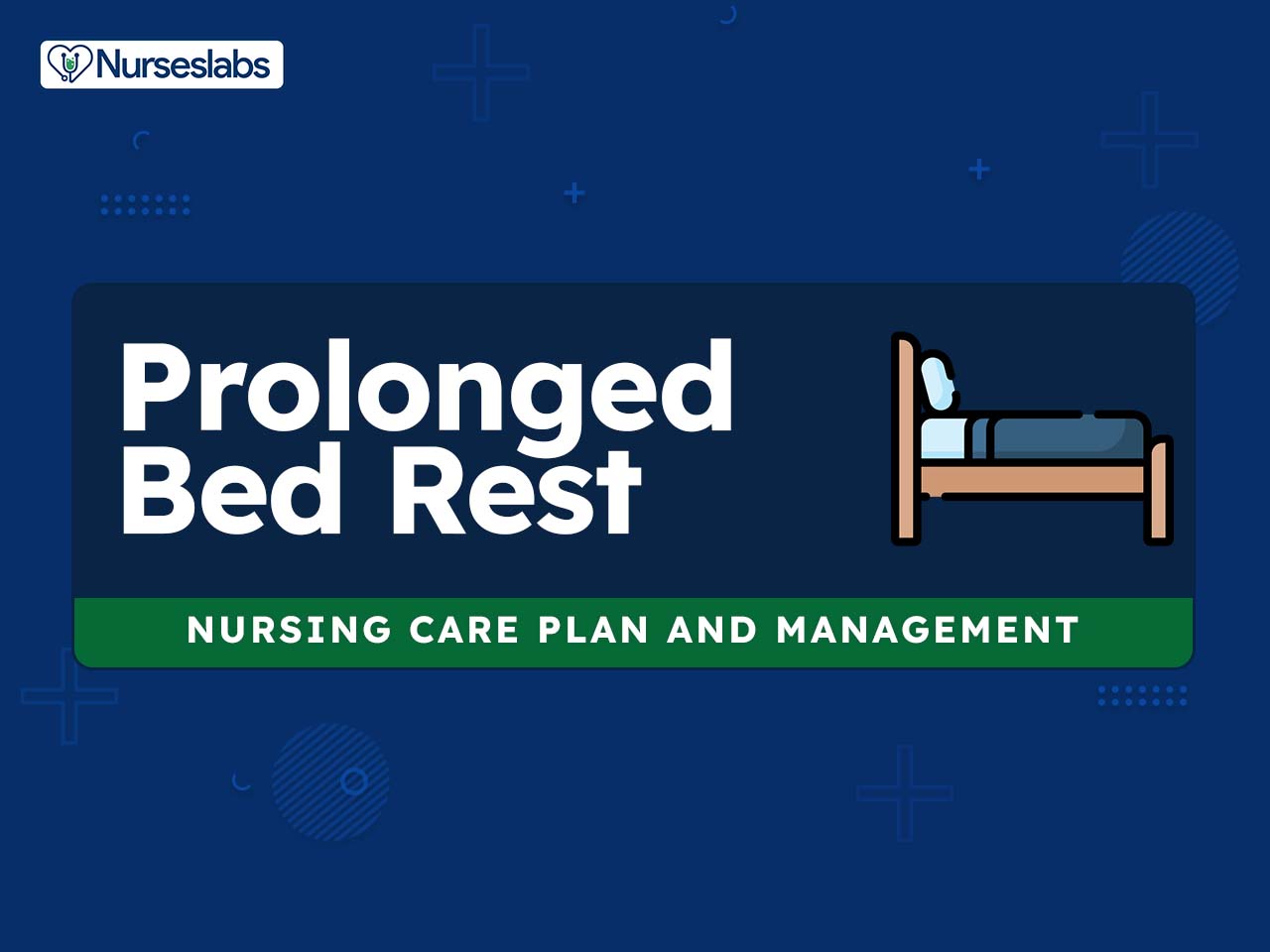
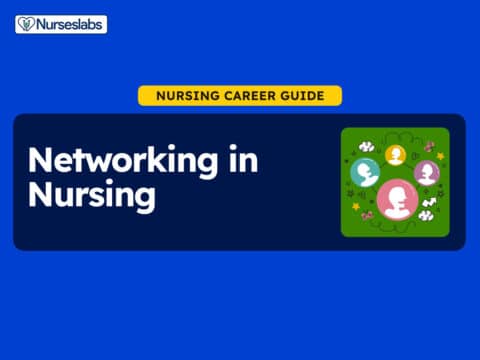























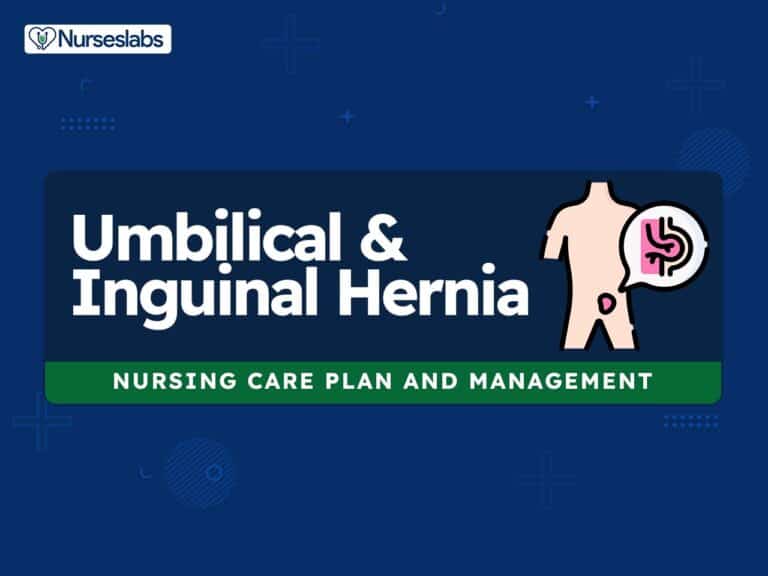

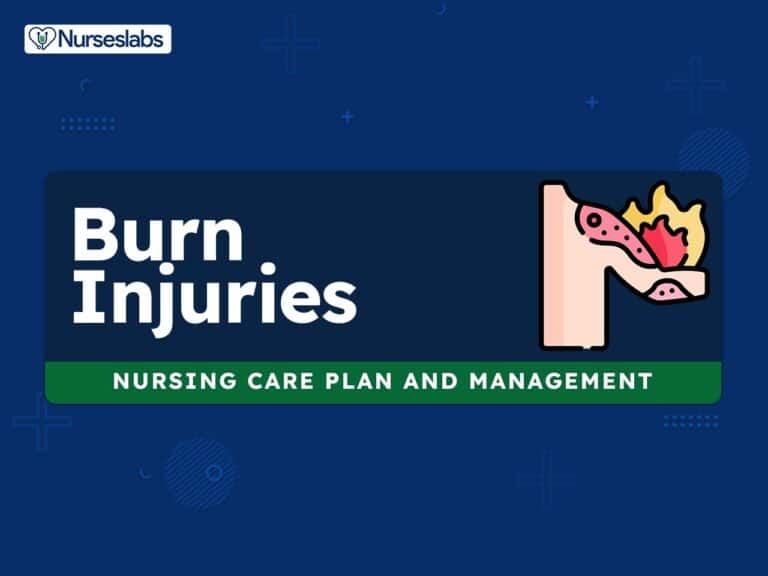
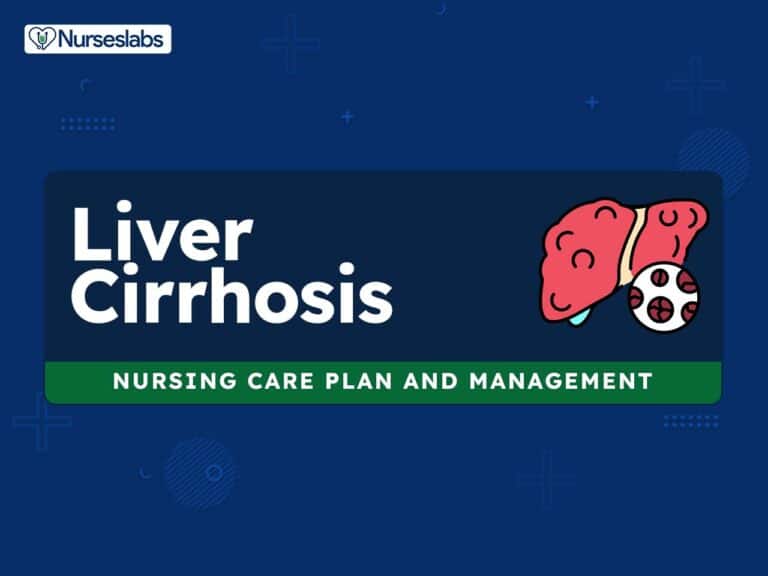
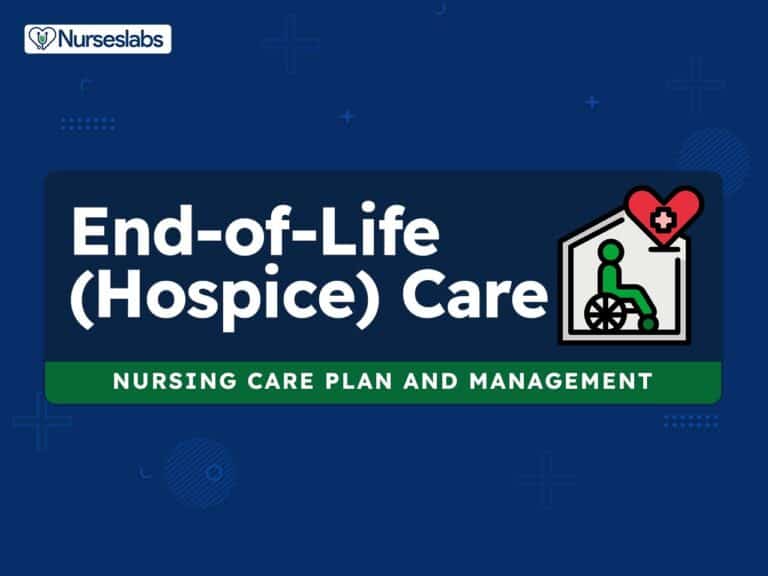






Leave a Comment